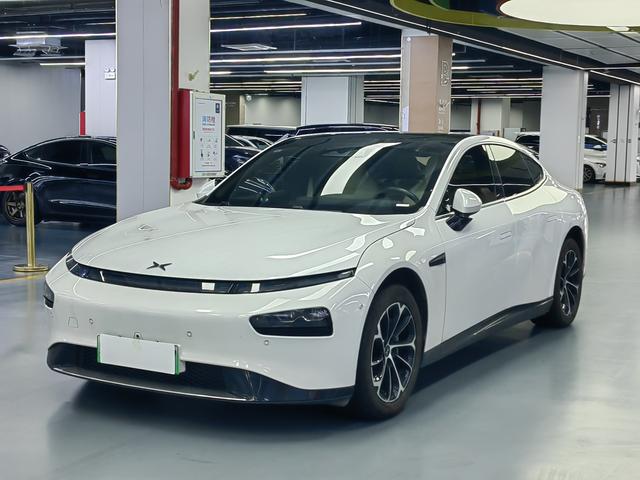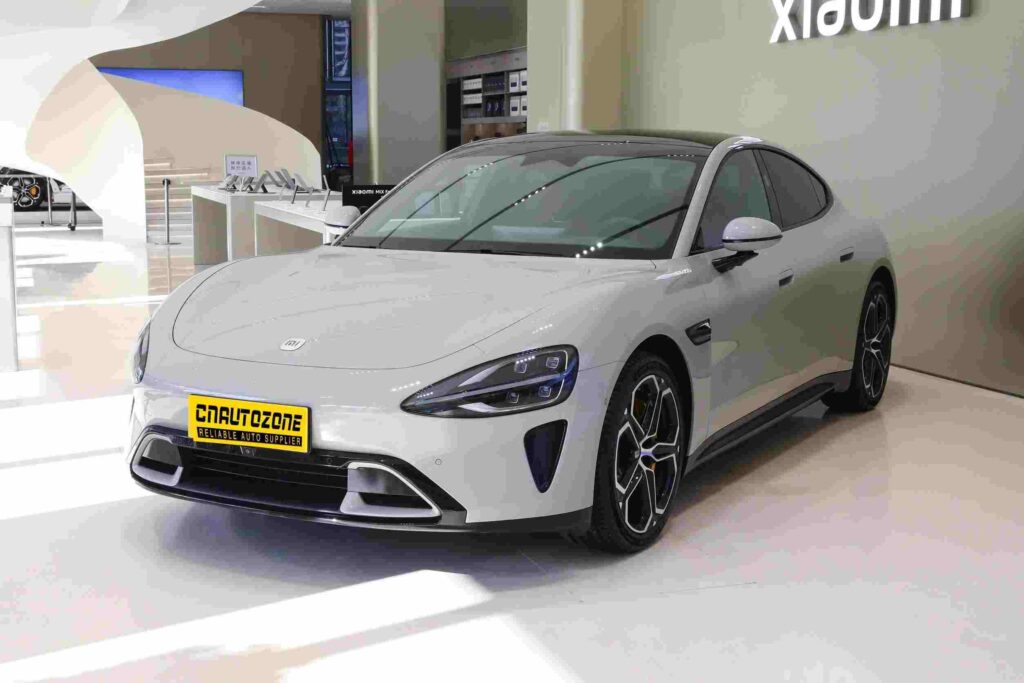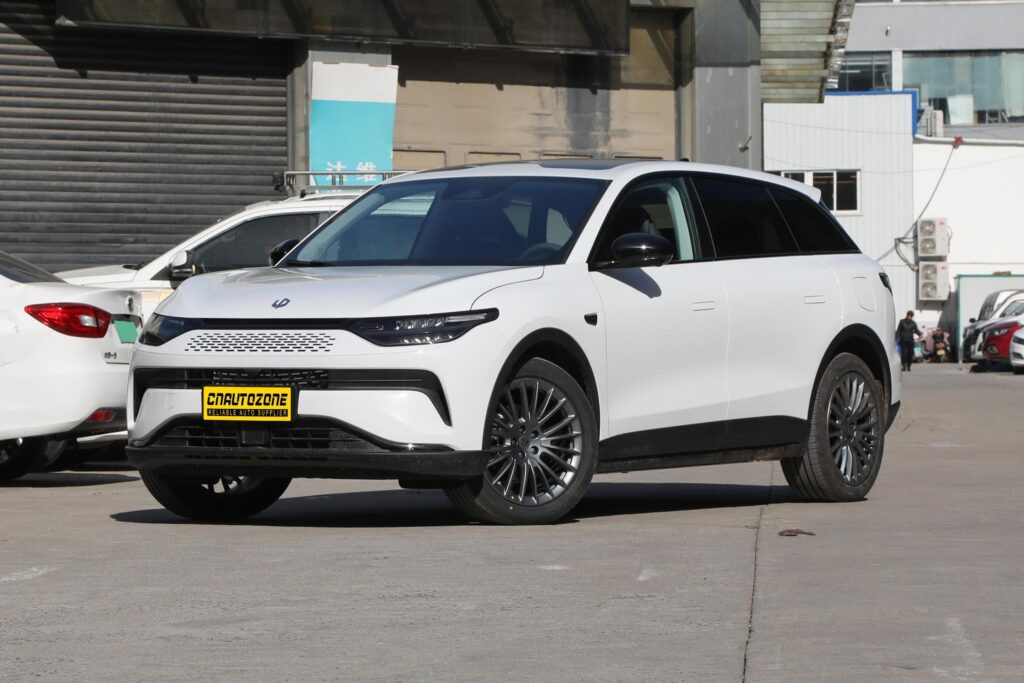As electric vehicles (EVs) gain prominence within the automotive industry, options for consumers have multiplied significantly. Among the most noteworthy entrants into the EV market are the Xpeng P7 and the Xiaomi SU7. Both vehicles feature cutting-edge technology, offer excellent range, and appeal to a demographic increasingly interested in sustainability and innovation. This blog post will delve into a comprehensive comparison of these two electric cars, discussing their performance, driving experience, design, technology features, safety, and overall suitability for various types of consumers.

Overview of Xpeng P7
The Xpeng P7, produced by the Chinese automaker Xpeng Motors, has garnered attention since its launch. With a sleek and modern sedan design, it positions itself as a tech-savvy, intelligent vehicle targeting urban professionals and younger consumers. The P7 is available in several trims, each offering different performance specs and features, but all share a commitment to sustainability through electric drivetrains.
Performance Specifications
The Xpeng P7 is equipped with dual electric motors, allowing it to provide all-wheel drive capabilities. Depending on the variant chosen, its power output fluctuates, with the high-performance version producing up to 400 horsepower. The acceleration from 0 to 100 km/h takes as little as 4.3 seconds, showcasing the car’s sporty character while emphasizing its efficiency.
The P7’s battery pack options provide a range of approximately 480 to 706 kilometers on a single charge, depending on the chosen configuration. This impressive range is facilitated by advanced battery technology, allowing users to embark on long-distance journeys without the anxiety often associated with EV charging infrastructure.
Driving Experience
The driving experience in the Xpeng P7 is marked by its smooth handling and advanced electric drivetrains. The vehicle incorporates a host of driving modes that allow drivers to tailor their experience to suit personal preferences, whether opting for energy-saving modes for longer trips or sport modes for a more exhilarating ride.
The regenerative braking system efficiently recaptures energy when slowing down, extending the overall range of the vehicle. Additionally, the ride quality is enhanced by a well-tuned suspension that balances comfort and sportiness, making it suitable for both urban commuting and long-distance travel.
Overview of Xiaomi SU7
Xiaomi, a brand more commonly associated with electronics, has made its foray into the automotive market with the Xiaomi SU7. This vehicle reflects Xiaomi’s philosophy of integrating technology seamlessly into everyday life, positioning it as a smart, spacious, and innovative EV.

Performance Specifications
The Xiaomi SU7 comes with a competitive electric powertrain that is designed to offer both efficiency and thrilling performance. It is available in various configurations, the most powerful delivering around 450 horsepower, translating to an impressive acceleration from 0 to 100 km/h in roughly 4.5 seconds.
In terms of range, the SU7 boasts a single-charge capability of about 600 kilometers, reinforcing its appeal for consumers seeking longer journeys without frequent charging stops. The vehicle employs rapid charging technologies, allowing drivers to recharge a significant portion of the battery in a comparatively short amount of time.
Driving Experience
The Xiaomi SU7’s driving experience is characterized by its unique blend of technology and comfort. The vehicle offers multiple driving modes, catering to both performance aficionados and those focused on efficiency. In addition, it features a sophisticated suspension system near its luxury rivals, resulting in a smooth ride that can adeptly handle the rigors of city driving or more challenging road conditions.
The regenerative braking system is one of the standout features, providing tangible benefits for battery efficiency while minimizing the need for traditional braking. Drivers can expect a responsive and engaging driving experience, making this vehicle an excellent choice for daily commuters and weekend adventurers alike.
Design and Interior Quality
Xpeng P7
The Xpeng P7 presents a very modern and sophisticated design ethos. With its sleek lines and an aggressive stance, the P7 captures attention effortlessly. The emphasis on aerodynamics is evident not only in its visual appeal but also in its performance, as its low drag coefficient enhances efficiency.
Inside the car, the P7 showcases high-quality materials with a minimalist but futuristic aesthetic. The dashboard features dual screens, including an expansive infotainment display that offers the latest connectivity and entertainment options. Ambient lighting sets a calming atmosphere while the ergonomic seating ensures comfort for both the driver and passengers.
Xiaomi SU7
Xiaomi has adopted a contemporary design language for the SU7. Its exterior design mirrors that of tech devices, with clean lines and a distinctive front fascia that echoes the brand’s identity. While Xiaomi may not have the heritage of traditional automakers, its first foray into the automotive sector leverages its reputation for innovative design.
The interior of the SU7 is spacious, equipped with high-quality finishes normally found in more expensive vehicles. Its infotainment system is user-friendly, drawing on Xiaomi’s expertise in electronics to deliver an intuitive experience. The incorporation of smart features such as voice recognition enhances usability for tech-savvy consumers. Additionally, generous legroom and headroom render it a practical choice for families.
Technology Features
Xpeng P7
The P7 stands out for its commitment to advanced technology. One of its hallmark features is the sophisticated driver assistance system, which includes Adaptive Cruise Control, Automated Lane Changing, and Emergency Braking—a step toward achieving higher levels of autonomous driving in the future.
Xpeng’s smart in-car technology utilizes an advanced AI system to make driving safer and more enjoyable. It integrates seamlessly with smartphones and offers a range of apps, allowing users to control various aspects of the vehicle remotely. The Xpeng P7 also features over-the-air updates, ensuring software optimizations and enhancements remain accessible over time.
Xiaomi SU7
Xiaomi’s strength in technology greatly reflects in the SU7. It boasts a robust infotainment system that offers a connection to the Internet of Things (IoT), enabling control of smart home devices directly from the vehicle interface. This integration appeals to tech enthusiasts looking for a seamless lifestyle connection.
The SU7 is equipped with an array of advanced driver-assistance features that promote safety and ease of use. Like the P7, it includes features such as Lane Departure Warning, Traffic Jam Assist, and automatic emergency braking. Xiaomi continually seeks to enhance these technologies, promising regular updates to improve functionality and user experience.
Safety Features
Xpeng P7
Safety is paramount for any car manufacturer, and Xpeng has made substantial investments in ensuring that the P7 is equipped with state-of-the-art safety technology. The vehicle is engineered with a robust chassis and multiple airbags strategically placed to protect occupants in the event of a collision.
In addition, the P7’s driver-assistance features are designed to minimize the likelihood of accidents. The development of an advanced sensor suite allows for accurate real-time assessment of the surrounding environment, providing confidence to drivers.
Xiaomi SU7
The Xiaomi SU7 doesn’t fall short in the safety department, showcasing a comprehensive suite of safety features. Anti-lock braking systems, stability control, and collision avoidance systems work together to enhance overall safety metrics. The vehicle has successfully undergone various crash tests, boasting commendable ratings that reinforce consumer trust in its protective capabilities.
The incorporation of intelligent safety systems further differentiates the SU7 in the competitive electric vehicle segment. Continuous monitoring and feedback loops enable drivers to become aware of potential hazards, enhancing overall situational awareness while driving.
Price and Value Proposition
Pricing is a critical factor in purchasing decisions. The Xpeng P7 comes with a price range that generally starts in the affordable luxury segment of around $30,000, depending on the configuration chosen. This pricing is competitive, especially considering the performance and technology features it offers, appealing to individuals seeking quality at a reasonable cost.
On the other hand, the Xiaomi SU7 aims for a similar target market, with prices slightly varying based on options and configurations. Xiaomi leverages its existing ecosystem to bolster value; for example, owning Xiaomi smart devices allows for more efficiency and conveniences, adding appeal to their automotive offering.
Conclusion
In conclusion, both the Xpeng P7 and Xiaomi SU7 emerge as strong contenders within the electric vehicle marketplace. The P7 is an excellent option for those prioritizing performance and advanced driving dynamics, while the SU7 appeals to consumers drawn to comprehensive smart technology integration and spacious design.
Ultimately, the best choice hinges on individual consumer preferences, particularly concerning driving experience, technological amenities, and design aesthetics. The explosive growth in the electric vehicle space means consumers are presented with increasingly appealing choices, and considering either the Xpeng P7 or the Xiaomi SU7 is a testament to joining the sustainable mobility movement. As the future of mobility shapes up, both manufacturers are set to continue refining their offerings, pushing boundaries, and delivering exciting innovations in the world of electric vehicles.

